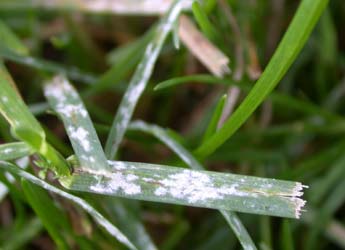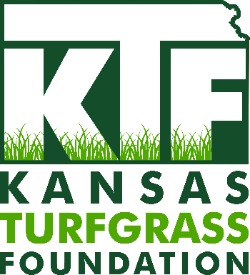Powdery Mildew (Erysiphe graminis)

Powdery mildew is a foliar disease of Kentucky bluegrass and some fescues. The pathogen (Erysiphe graminis) is a fungus that over-winters in dormant turf, or as specialized survival structures (cleistothecia) in turfgrass leaf litter. Powdery mildew is simple to diagnose. From a distance, affected turf has a white or light gray appearance. Close inspection of affected leaf blades reveals the presence of small (around 1/16 inch in diameter) pustules with masses of white spores that may eventually cover the entire leaf. The spores provide the only significant means of dispersal of the pathogen. Only leaves are infected and no web-like mycelium is produced on the plant surfaces.
Occurrence
Powdery mildew occurs most often on slow growing turf, usually in shaded areas. Pathogen activity is favored by cool cloudy conditions that prevail in spring and fall. Prolonged periods of dew or wet weather are not needed for disease establishment and spread, although periods of high humidity favor disease development. Initial symptoms normally occur in areas with poor air circulation. Excess nitrogen fertilizer may increase risk of infection.
Non-Chemical Control
The disease rarely is responsible for any lasting damage to turf. Shade tolerant Kentucky bluegrass varieties tend to be less susceptible to powdery mildew. Over-seeding shaded areas with these varieties will reduce powdery mildew establishment and spread. Improving air circulation by careful pruning of trees and shrubs also will help limit mildew development (and will serve to suppress some mid-summer diseases). Avoiding excess levels of nitrogen in disease-prone areas also may contribute to a reduction in mildew outbreaks.
Chemical Control
Because the disease rarely is responsible for any lasting damage to turf, there are very few instances where the cost of fungicide application would be worthwhile. If the appearance of mildew-infected turf is absolutely intolerable, fungicides may be applied for effective control. A professional lawn care service should be contracted for the application.



